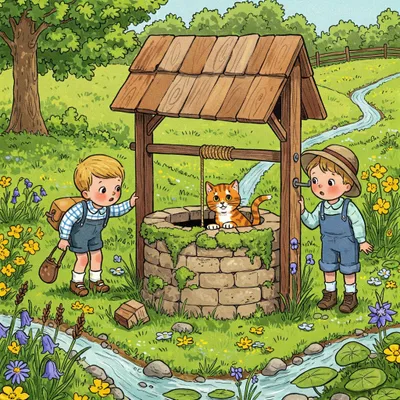Ding Dong Bell

Lyrics
Pussy’s in the well.
Who put her in?
Little Johnny Green.
Who pulled her out?
Little Tommy Stout.
What a naughty boy was that
Try to drown poor Pussycat,
Who ne'er did any harm
But killed all the mice
In the Farmer's barn!
History and Meaning
The modern version of "Ding Dong Bell" tells the story of a naughty boy named Johnny Flynn who traps a helpless cat in a well. Luckily, another good child, Tommy Stout, comes to the rescue and saves the cat from danger. The rhyme raises the question of why Johnny Flynn would put the harmless cat in the well when she was only trying to help the farmer by chasing away pests.
It teaches kids a moral lesson about being kind to animals and treating them with respect.
The first recorded variant of the rhyme dates back to 1580. It was preserved thanks to John Lang, the organist of Winchester Cathedral, who wrote down the following version:
Jacke boy, ho boy newes,
the cat is in the well,
let us ring now for her Knell,
ding dong ding dong Bell.
Thomas Ravenscroft, a composer and musician, arranged the song as a canon or a round featuring four voices in his Musicks Miscellanie of 1609.
The descriptive phrase "ding, dong" has been associated with the sound of bells for centuries, and it was commonly used during the 17th century. In fact, it appears a few times in the plays of William Shakespeare, here as quoted from The Tempest and The Merchant of Venice:
The Tempest, Act I, Scene II:
Sea nymphs hourly ring his knell:
Hark! Now I hear them – Ding, dong, bell.
The Merchant of Venice, Act III, Scene II:
Let us all ring fancy's knell;
I'll begin it – Ding, dong, bell.